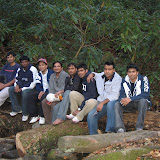Increasing usage of Internet had triggered enormous hosting & usage of information online. Today, if you want to know about something all you do is go to google or wiki or answers, type in the search item and click...you shall be presented with contextual based results using of searched item.
Students, employees, Doctors, children, people of all age groups use this functionality to feed themselves with information they require.
An average of billions of items are searched every day. So how has this present day search functionlaity evolved?
-
First-generation search ranked sites based on page content - examples are early yahoo.com and Alta Vista.
-
Second-generation relies on link analysis for ranking - so they take the structure of the Web into account. Examples are Google and Overture.
-
Third-generation search technologies are designed to combine the scalability of existing internet search engines with new and improved relevancy models; they bring into the equation user preferences, collaboration, collective intelligence, a rich user experience, and many other specialized capabilities that make information more productive.
In today’s business environment, time and information are arguably our two most precious resources. Yet most businesses squander both on a daily basis.
• According to research firms IDC and Delphi Group, the average knowledge worker spends about a quarter of his or her day looking for information.
• Add to that the time spent by IT personnel and various specialists to manage company information – and the technologies used to store, organize, and locate it.
• Finally, tally the lost revenue resulting from delays in time-to-market. The high costs to a company of not finding information, or of finding it too late, include faulty decisions, duplicated efforts, lost productivity, and missed opportunities. Their impact can cascade throughout an organization. The personal frustrations involved are also considerable – as anyone who has tried and failed to find a slide or a spreadsheet in time for a vital meeting can testify. The costs can be even higher in fi elds such as health care, the pharmaceutical industry, and life sciences, where up-to-date information and time-to-market are competitive essentials.
THE CRITERIA FOR GOOD ENTERPRISE SEARCH: The solution: As easy as 1, 2, 3
The symptoms are complex, but the prescription is simple: Managers and administrators need tools to connect employees with relevant information quickly and easily. Three things are required:
1.
Fast, accurate search results. To be successful, enterprise search must be powerful enough to deliver the most relevant information, consistently and effi ciently, whenever and wherever it’s needed.
2.
Minimal administrative overhead. Enterprise search must be quick enough to deploy and easy enough to manage that the cost of installing and maintaining it won’t exceed the benefi t.
3.
An intelligible user interface. Enterprise search must be simple and effective enough that users will actually use it.
Simplicity without sacrifice
Search quality: Deliver the goods
To fully realize the value of the information assets your business creates:
• Information must be readily and reliably accessible to everyone who’s entitled to view it.
• The information delivered must be current and relevant (the user needs the right document, usually in the most recent version).
• A clear, accurate ranking system should guide users swiftly and accurately to the data they need.
• Your intranet search should put your whole organization on the same page, providing a consistent view of information across your company, while keeping sensitive documents secure
A Study observes that Poor search, was the single greatest cause of reduced usability across the intranets studied. “Search usability accounted for an estimated 43 percent of the difference in employee productivity between the best and worst intranets.”
The study also found dissatisfied search users turning to expensive and inefficient alternatives (“The results are really gibberish. I’d stop now and use the phone”) or giving up altogether – which, for such users, brings the ROI for the unused online assets down to zero. Disappointed by the irrelevant results returned by one company’s intranet search, “Some users had stopped using it entirely. One user said, ‘I’ve tried using the search and I think it’s terrible. I don’t think I’ve ever successfully searched for anything and found what I’m looking for. If I tried anything now, I bet it wouldn’t work.”
Measuring users’ performance for 16 common tasks across the 14 intranets studied, the report found wide variations in usability, with corresponding variations in cost. After accounting for salaries and overhead, a company with one of the least usable intranets in the study would spend $3,042 per employee annually to cover time spent on the 16 tasks measured, while one of the most usable would cost only $1,563 per year.
Extrapolating from these and other fi gures, the report estimates the total annual cost
of intranet use at various levels of usability for companies with 10,000 users:
• Good usability: $15.6 million annually
• Average usability: $20.7 million annually
• Poor usability: $30.4 million annually
HOW MUCH DOES SEARCH TIME COST A COMPANY? Multiply the number of users by the figure below that best represents the current level of search:
• $3,042 per employee – least usable intranet
• $2,069 per employee – average usable intranet
• $1,563 per employee – most usable intranet
SIMPLICITY AND ENTERPRISE SEARCH A company with 10,000 users would need to invest about $500,000 to move from one level to another. Therefore the ROI for improving intranet usability as ranging from a factor of 20 for the lowest group to a factor of 10 for intranets of average usability.
** Most of above information is from White Papers Courtesy: Google Search**


